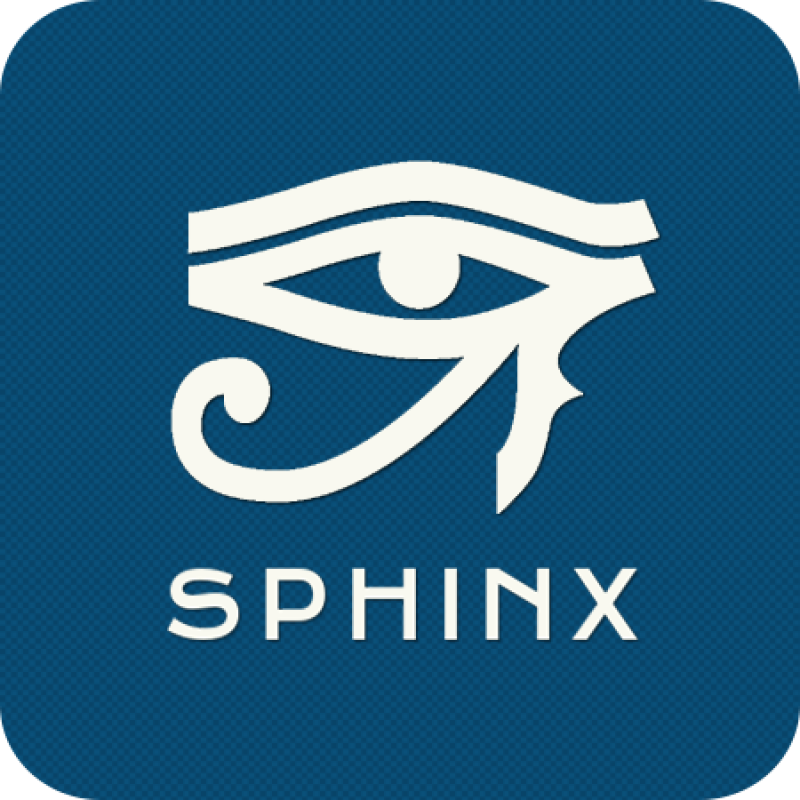9.8. 样式#
9.8.1. CSS Variables#
All colors used by sphinx-design are defined as CSS variables.
Therefore they can be overriden by adding a .css file in a _static folder in your projects source folder (see the sphinx documentation):
html_static_path = ['_static']
html_css_files = ['custom.css']
For colors, there are nine semantic colors that can be defined. For each of these colors you should define:
--sd-color-{name}as the actual color--sd-color-{name}-highlightas the color used when the component is highlighted (e.g. if hovering over a button). By default, this is a 15% darker version of the original color.--sd-color-{name}-textas the color to use for text displayed on top of the color. By default, this is dark grey for light colors and white for dark colors.
The defaults are:
:root {
--sd-color-primary: #007bff;
--sd-color-secondary: #6c757d;
--sd-color-success: #28a745;
--sd-color-info: #17a2b8;
--sd-color-warning: #f0b37e;
--sd-color-danger: #dc3545;
--sd-color-light: #f8f9fa;
--sd-color-muted: #6c757d;
--sd-color-dark: #212529;
--sd-color-primary-highlight: #0069d9;
--sd-color-secondary-highlight: #5c636a;
--sd-color-success-highlight: #228e3b;
--sd-color-info-highlight: #148a9c;
--sd-color-warning-highlight: #cc986b;
--sd-color-danger-highlight: #bb2d3b;
--sd-color-light-highlight: #d3d4d5;
--sd-color-muted-highlight: #5c636a;
--sd-color-dark-highlight: #1c1f23;
--sd-color-primary-text: #fff;
--sd-color-secondary-text: #fff;
--sd-color-success-text: #fff;
--sd-color-info-text: #fff;
--sd-color-warning-text: #212529;
--sd-color-danger-text: #fff;
--sd-color-light-text: #212529;
--sd-color-muted-text: #fff;
--sd-color-dark-text: #fff;
--sd-color-shadow: rgba(0, 0, 0, 0.15);
--sd-color-card-border: rgba(0, 0, 0, 0.125);
--sd-color-card-border-hover: hsla(231, 99%, 66%, 1);
--sd-color-card-background: transparent;
--sd-color-card-text: inherit;
--sd-color-card-header: transparent;
--sd-color-card-footer: transparent;
--sd-color-tabs-label-active: hsla(231, 99%, 66%, 1);
--sd-color-tabs-label-hover: hsla(231, 99%, 66%, 1);
--sd-color-tabs-label-inactive: hsl(0, 0%, 66%);
--sd-color-tabs-underline-active: hsla(231, 99%, 66%, 1);
--sd-color-tabs-underline-hover: rgba(178, 206, 245, 0.62);
--sd-color-tabs-underline-inactive: transparent;
--sd-color-tabs-overline: rgb(222, 222, 222);
--sd-color-tabs-underline: rgb(222, 222, 222);
--sd-fontsize-tabs-label: 1rem
}
9.8.2. CSS Classes#
For most roles/directive, it is preferentially recommended to use the available options to style components since, for example, this allows for better cross-output-format styling.
But for custom cases, these roles/directives also provide class options for adding CSS classes directly to element, or you can directly use the div directive.
All CSS classes that are part of sphinx-design are prefixed with sd-.
Some CSS styled text
Syntax
If you find yourself using a class(es) often, consider opening an issue to request a new role/directive or option!
The div directive also has the style option, which allows you to add inline CSS styles, although it is not recommended to use this option for most cases.
Text#
Classes are available for styling and alignment:
Alignment:
sd-text-justifysd-text-leftsd-text-rightsd-text-center
Size (size decreases from 1 to 6):
sd-fs-1sd-fs-2sd-fs-3sd-fs-4sd-fs-5sd-fs-6
Weight:
sd-font-weight-lightsd-font-weight-lightersd-font-weight-normalsd-font-weight-boldsd-font-weight-bolder
Style
sd-font-italicsd-text-decoration-nonesd-text-lowercasesd-text-uppercasesd-text-capitalize
Wrapping
sd-text-wrapsd-text-nowrapsd-text-truncate(requiresdisplay: inline-blockordisplay: block)
Color
sd-text-{semantic color name}(uses--sd-color-{semantic color name}CSS variable)sd-bg-text-{semantic color name}(uses--sd-color-{semantic color name}-textCSS variable)
Display#
Define the layout of an element and its children (see display):
sd-d-nonesd-d-inlinesd-d-inline-blocksd-d-blocksd-d-gridsd-d-flex-row(align items horizontally)sd-d-flex-column(align items vertically)sd-d-inline-flex
Variants are also available for screen-sizes (xs, sm, md, lg), e.g. sd-d-sm-none.
Items within a flex box can also be aligned along the major axis or minor axis, dependant on the flex-direction.
For example, using sd-d-flex-column and sd-align-major-center will center the items in the vertical direction.
sd-align-major-startsd-align-major-endsd-align-major-centersd-align-major-spaced(spaced to fill the full axis)sd-align-major-justify(spaced to fill the full axis, with the first/last item on the edges of the axis)sd-align-minor-startsd-align-minor-endsd-align-minor-center
For more information, see this guide to flexbox.
Sizing#
Size objects width/height by percentage:
sd-width-25,sd-height-25sd-width-50,sd-height-50sd-width-75,sd-height-75sd-width-100,sd-height-100sd-width-auto,sd-height-auto
Spacing#
Padding (p) and margins (m) can be controlled with these classes for; (t)op, (r)ight, (b)ottom, (l)eft, x (left and right), and y (top and bottom).
Spacing are defined on a scale of 0 to 5, for example sd-px-1 or sd-mt-5.
Note, for grids the special gutter classes sd-g-{screen-size}-{spacing} are used to set margins, or for only x/y; sd-gx-{screen-size}-{spacing}.
Colors#
Colors can be set using CSS variable, they are defined for the semantic color names: primary, secondary, success, warning, danger, info, light, dark, and muted, and specific colors black and white.
sd-bg-{name}sd-bg-text-{name}sd-text-{name}sd-outline-{name}
Additional transparent colouring:
sd-bg-transparentsd-outline-transparentsd-text-transparent
Borders#
Borders can be applied to elements of thickness 0 to 5, for all are a specific side:
sd-border-{thickness}sd-border-top-{thickness}sd-border-bottom-{thickness}sd-border-right-{thickness}sd-border-left-{thickness}
sd-border-0
sd-border-1
sd-border-2
sd-border-3
sd-border-4
sd-border-5
Border can be rounded by different amounts using:
sd-rounded-0sd-rounded-1sd-rounded-2sd-rounded-3sd-rounded-pillsd-rounded-circle
sd-rounded-0
sd-rounded-1
sd-rounded-2
sd-rounded-3
sd-rounded-pill
sd-rounded-circle
Shadows#
Shadows can be applied to box elements (the color of the shadow is defined using --sd-color-shadow CSS variable):
sd-shadow-nonesd-shadow-smsd-shadow-mdsd-shadow-lg
sd-shadow-none
sd-shadow-sm
sd-shadow-md
sd-shadow-lg
Avatars#
Avatars can represent a user or a brand,with a logo or branded graphic (see Material Design imagery).
These classes center an image, set their size and add a circular crop:
sd-avatar-xssd-avatar-smsd-avatar-mdsd-avatar-lgsd-avatar-xlsd-avatar-inheritsd-avatar-initial
Load Animations#
Add CSS animations when loading elements using the sd-animate-{name} classes:
sd-animate-slide-from-leftsd-animate-slide-from-rightsd-animate-grow100sd-animate-grow50sd-animate-grow50-rot20
See uxdesign.cc and material.io for good guides to animation.
